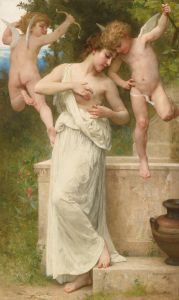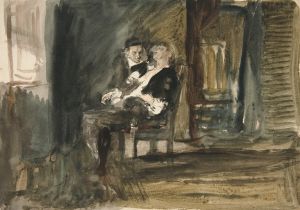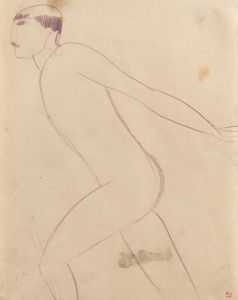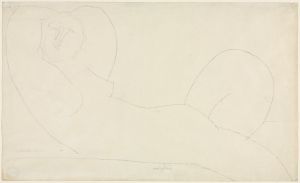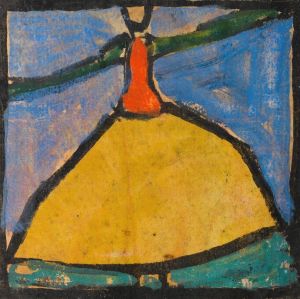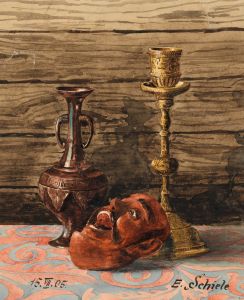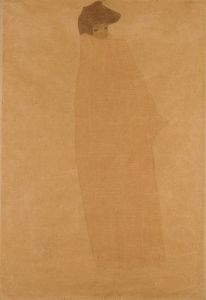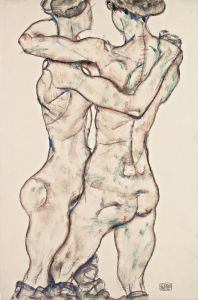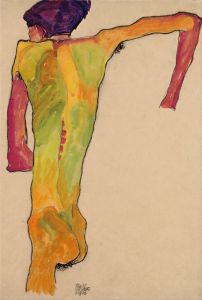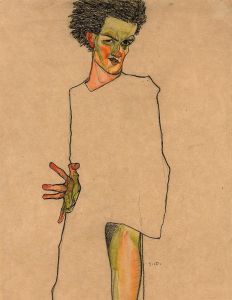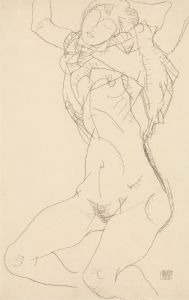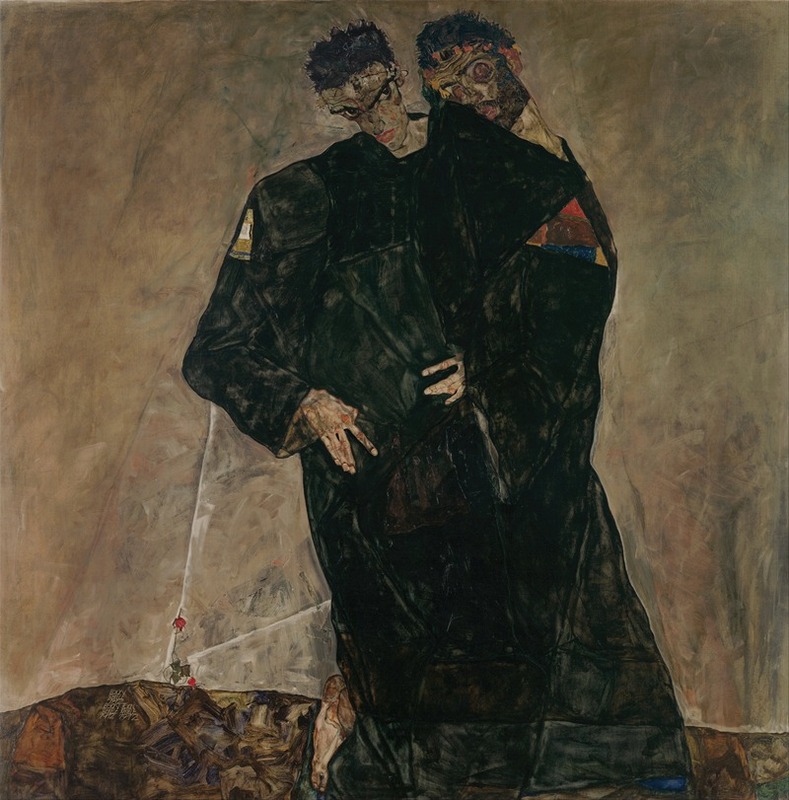
The Hermits
A hand-painted replica of Egon Schiele’s masterpiece The Hermits, meticulously crafted by professional artists to capture the true essence of the original. Each piece is created with museum-quality canvas and rare mineral pigments, carefully painted by experienced artists with delicate brushstrokes and rich, layered colors to perfectly recreate the texture of the original artwork. Unlike machine-printed reproductions, this hand-painted version brings the painting to life, infused with the artist’s emotions and skill in every stroke. Whether for personal collection or home decoration, it instantly elevates the artistic atmosphere of any space.
"The Hermits" is a notable painting by the Austrian expressionist artist Egon Schiele, completed in 1912. Schiele, a protégé of Gustav Klimt, is renowned for his distinctive style characterized by intense emotional expression and bold, often unsettling compositions. "The Hermits" is a significant work within Schiele's oeuvre, reflecting his exploration of themes such as isolation, existential angst, and the human condition.
The painting depicts two figures, often interpreted as hermits, standing closely together. The figures are enveloped in dark, flowing robes that merge into a somber, almost monochromatic background. This blending of figures and background creates a sense of unity and isolation simultaneously, a duality that is central to the painting's impact. The figures' faces are gaunt and elongated, typical of Schiele's style, and their expressions convey a sense of introspection and melancholy.
One of the figures in "The Hermits" is widely believed to be a self-portrait of Schiele, while the other is thought to represent his mentor, Gustav Klimt. This interpretation is supported by the physical resemblance of the figures to the two artists and the close personal and professional relationship they shared. Klimt was a significant influence on Schiele, providing him with guidance and support during his early career. The painting can thus be seen as a tribute to Klimt, as well as an exploration of Schiele's own identity and artistic journey.
"The Hermits" is executed in oil on canvas, a medium that allows for the rich, textured surface that characterizes much of Schiele's work. The use of a limited color palette, dominated by browns, blacks, and muted earth tones, enhances the painting's somber mood and emphasizes the themes of solitude and introspection. The composition is tightly focused on the two figures, with little extraneous detail, drawing the viewer's attention to their expressions and the emotional tension between them.
This painting is housed in the Leopold Museum in Vienna, which holds one of the largest collections of Schiele's works. The museum is dedicated to Austrian art from the late 19th and early 20th centuries, with a particular focus on Schiele and his contemporaries. "The Hermits" is considered one of Schiele's masterpieces and is frequently studied for its psychological depth and innovative use of form and color.
Egon Schiele's work, including "The Hermits," is often associated with the broader Expressionist movement, which sought to convey emotional experience rather than physical reality. Schiele's intense, often unsettling imagery and his exploration of themes such as death, sexuality, and isolation have left a lasting impact on the art world, influencing numerous artists and movements that followed. "The Hermits" remains a powerful example of his ability to capture the complexities of human emotion and the existential struggles of the early 20th century.





